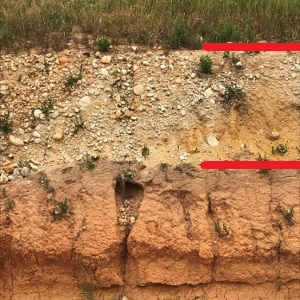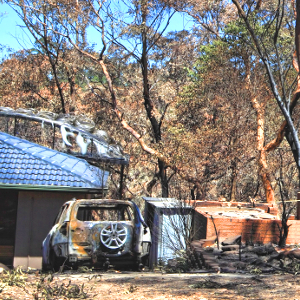Understanding Preliminary Aboriginal Heritage Tests (PAHTs)
Cultural Heritage Management Plans (CHMPs) are recognised as best practice for protecting and managing Aboriginal cultural heritage before, during and after development. There are specific triggers under the Aboriginal Heritage Regulations 2018 (the Regulations) for the mandatory requirement for a CHMP (such as a proposed “high impact activity” occurring in an “area of sensitivity”). Where there is uncertainty as to the requirement for a CHMP, a Preliminary Aboriginal Heritage Test or PAHT (pronounced “part”) can provide some certainty at the outset of a project.
The PAHT offered under the Aboriginal Heritage Act 2006 (the Act) was introduced to give greater clarity as to whether a CHMP is mandatory for an activity. If the PAHT is “certified”, statutory exemption for the preparation of a CHMP is provided.
As at 31 May 2020, 138 PAHTs have been certified, and 25 PAHTs refused. Unlike VCAT red-dot decisions, PAHT decisions do not set precedent; each is considered on a case-by-case basis. Previous PAHTs are lodged on the Victorian Aboriginal Heritage Register (VAHR) and accessible for the purposes of s.146 of the Act.
Here we present some common questions put to us by clients.
What is the Intention of the PAHT?
PAHTs are designed to provide certainty to Sponsors as to whether a CHMP is mandatory for a proposed activity under the Act and the Regulations. The PAHT process determines early on if a mandatory CHMP is triggered or exempt. Commonly, a PAHT is used for certification of the finding of Significant Ground Disturbance (SGD) (as defined under r.5), but the process can be used wherever there is any uncertainty as to the requirement for a CHMP.
Should the PAHT be prepared for the common use of demonstrating SGD, once certified, it is a statutory agreement that the area of cultural heritage sensitivity within an activity area has been significantly disturbed (as per the specific definition), which in turn removes that sensitivity. Once all the area of cultural heritage sensitivity is removed, a mandatory CHMP is no longer triggered. Note that fill placed over natural ground surface is not SGD, nor is the presence of sludge from gold mining.
Ecology and Heritage Partners have been engaged to prepare PAHTs for reasons other than proving SGD. One example was to seek certification on whether an activity was a high impact activity. Opinions were divided, so the question was put to the “test”. While the outcome determined it was not a high impact activity, there were still grounds to believe that Aboriginal heritage may be impacted by the activity. As a result, the PAHT was refused and therefore, the best practice for management of potential heritage was the preparation of a voluntary CHMP.
Is a PAHT Required Prior to a CHMP?
Undertaking a PAHT is generally a voluntary decision made by the Sponsor. A statutory approval authority such as a Council can require a certified PAHT be presented if there is uncertainty as to whether a CHMP is mandatory.
If it’s Voluntary, Why Do a PAHT?
If a developer believes they have a strong case, for example, of SGD being present in their activity area, and therefore there is little to no chance for Aboriginal cultural heritage to be present, then a PAHT can assist in progressing a planning application and project. While CHMPs are best practice, there is no doubt that they take time to prepare (usually many months) and come with associated costs. If it is likely no harm will come to Aboriginal heritage, as none is considered to be present, then a CHMP may not be the most appropriate mechanism for your project. The PAHT process can have a positive impact on project timelines and budget being more like a due diligence assessment and less onerous than a CHMP. A site visit may be required to document the condition of the property, particularly if the PAHT seeks to prove SGD. Geotechnical testing results can also provide solid evidence of soil disturbance and the results can be included in the PAHT.
How do I Know if a PAHT is the Best Option?
Undertaking a due diligence assessment can help determine whether a PAHT will be a viable and recommended option. A qualified Heritage Advisor or Registered Aboriginal Party can advise on this.
How is a PAHT Conducted?
Any persons, including the Sponsor, can prepare and submit a PAHT but a Heritage Advisor or Registered Aboriginal Party usually need to be engaged to access the Victorian Aboriginal Heritage Register (VAHR). Expert assistance in preparing the documentation may lead to a smoother evaluation process.
Preparation of a PAHT will need to include details on relevant background assessments, ground inspection or surveys, existing Aboriginal cultural heritage, the nature of the proposed activity and a conclusion as to whether a CHMP is mandatory. The details form the basis of the PAHT to be submitted for certification.
Who Evaluates the PAHT?
The Secretary to the Department of Premier and Cabinet (DPC; Aboriginal Victoria) is responsible for the assessment of PAHTs in Victoria. The Regulations set out a prescribed level of information that must be provided including a search of the VAHR.
Once a PAHT has been submitted and the fee paid, the Secretary has 21 days to evaluate the PAHT. The evaluation period ceases to run if the Secretary requests further information and recommences when such information has been provided.
If the Secretary finds that the supporting information in the PAHT sufficiently demonstrates that a CHMP is not required, the PAHT will be certified. Certification of a PAHT provides a statutory exemption from preparing a CHMP and can be included with permit applications. Refusal of a PAHT does not provide exemption and a CHMP (or the appropriate measures for protection and management of Aboriginal heritage) must be prepared for the proposed activity. As a voluntary process there is no appeal provision to the Secretary. Should a PAHT be refused, while the decision cannot be appealed to the Secretary, the matter can still be considered by VCAT, noting that the Secretary does not replace the courts. A statutory approval such as a planning permit cannot be issued without an approved CHMP if it is deemed mandatory.
How Much Does a PAHT Cost?
Fees are dependent on the size of the proposed activity area. Currently evaluation of a PAHT for a small activity area is $355.44; a medium activity area is $696.07; and a large activity area is $1,051.51. Other costs include access to the VAHR ($266.58), and additional fees if you engage a specialist to prepare the PAHT on your behalf.
The Best Outcome For Your Project
Whilst a PAHT can have a positive impact on project timelines and budget, it is not always the best course of action or appropriate for your project. Early due diligence assessment by a Heritage Advisor determines the legislative requirements regarding cultural heritage for your project, and the likelihood of a PAHT being an option.
Further Information
For further information or to discuss the best option for your project, contact our cultural heritage team on 1300 839 325.TOP IMAGE: Land-use history, such as this historical aerial image dated 2002, is often used in PAHTs when discussing previous disturbance to the land. In this instance, previous quarrying and land-fill activities are evident across the property.
This article was prepared by Annie Ayres, Senior Heritage Advisor and Cultural Heritage Team Leader, and Tyler Whitmarsh, Cultural Heritage Technical Officer, for the VPELA Revue magazine June 2020.














